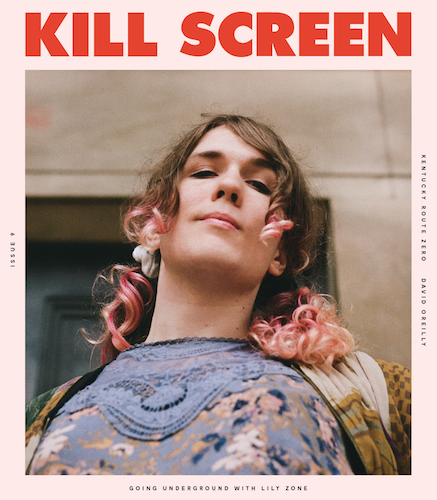
Collectible card games get a bad rap for being too complex, but that was never their biggest problem. Take Magic: the Gathering, for instance: when you strip away the thousands of expansions that have been released since its 1993 launch, the game isn’t much more difficult than, say, bridge or gin rummy.
it was a pre-emptive fallacy to hail the game for its accessibility
So when Blizzard Entertainment came and shook up the collectible card game scene with its now-hugely successful Hearthstone: Heroes of Warcraft, it was a pre-emptive fallacy to hail the game for its accessibility. Yes, it was easier to pick up than Magic; yes, the digital format transformed the card collection process from a long slog to an instant dopamine rush; but Blizzard never actually addressed the one thing that eventually leads to inaccessibility: the content itself. From the outset, Blizzard’s monetization scheme has always hinged on the creation of more cards, and as their newest Grand Tournament expansion is beginning to make clear, the entire Hearthstone enterprise is being slowly sucked down into a slow but steady spiral toward alienation.

That’s not to say that steps haven’t been taken to try and prevent this. The Grand Tournament is Hearthstone’s fourth expansion, and Blizzard has made a marked effort to grow the game in ways that don’t put off newcomers. The first, Naxxramas-themed expansion was a baby step of sorts—it introduced only a handful of new cards, and was presented as a single-player “adventure” campaign to make the package feel like more than just a fancy $20 pack. But with Naxxramas and its follow-up Goblins vs. Gnomes, Blizzard had already taken a crucial misstep: although the rollout was slow and steady, the cards themselves were way too strong. Even now, coming up on two expansions after the release of Goblins vs. Gnomes, the most powerful cards in the game (the impossibly strong “Dr. Boom” among them) mostly come from those first three card sets.
You could win with cheap, realistic decks, but those days are largely over
In the most popular “constructed” mode, where players build decks from the cards they’ve collected and compete to raise their rank, a player’s collection is the single most important factor in their success. At one point, this was not the case; the popular Hearthstone streamer Trump built a following from his “free-to-play” series, where he would build cheap, realistic decks and climb to the top through skill and grit alone. But those days are largely over: with more card options than ever before and an airtight metagame, Trump has had a hard enough time climbing the ladder with pre-built “netdecks,” much less with sub-optimal bargain concoctions.

The brand-new Grand Tournament and its immediate predecessor Blackrock Mountain are mainly notable for they way they’ve tried to set Hearthstone’s constructed mode straight after its initial power spike. Compared to the insanity of Goblins, the recent Blackrock expansion introduced a wealth of cards that were mostly powerful in very specific situations. Yes, there were a couple outliers that are considered to be good all-around, but even those (Emperor Thaurissan, Grim Patron, Flamewaker) are just mediocre unless they’re laid down as the foundational centerpieces of a deck.
Hearthstone has been making strides to be more beginner-friendly
This attempt to drive card power into more situational relevance has been Blizzard’s most important step in making Hearthstone more beginner-friendly. The fewer “must-have” cards that exist, after all, the easier it becomes for new players to build a relatively competitive deck.
For their part, Blizzard has been feeling out new ways to provide new content without further inflating the card pool. For 10 bucks a pop, players can pick up cosmetic hero upgrades. The just-introduced “Tavern Brawl” mode puts forth a new set of irreverent house rules every week, and gives out a free pack of cards for the first win. Then, over in Ranked mode, Blizzard has decided to start offering end-of-month rewards for players based on how high they were able to place. The incentives aren’t going to swing the beginners who get burned by the collection aspect, but they’re paving the road towards a more rewarding Hearthstone experience that doesn’t sacrifice those juicy profits.

The problem is, Blizzard might already be too late to salvage Hearthstone’s constructed deck mode. Post-Grand Tournament, there are almost 700 cards to collect, with a considerable amount of those being ultra-rare “legendary” cards that take time and money (alternately: a lot of time) to get a hold of. For players that don’t want to immediately invest a couple hundred dollars right off the bat, Hearthstone’s ranked mode is cool for about a week until they reach the dreaded rank 15 skill cliff, where legendaries are practically a prerequisite and dreams go to die.
Arena mode is the route to potential salvation
But Blizzard does have one route to potential salvation, and it’s entirely a byproduct of Hearthstone’s digital nature: the Arena mode. In Arena, players pay two dollars—or a couple hours’ worth of in-game gold—for the chance to draft the best deck they can from a random assortment of cards. After picking the 30 they want, they compete against other Arena participants until they lose three games. Then they’re rewarded with cards and in-game currency based on the amount of wins they racked up.

Arena is key to Hearthstone’s success because it doesn’t hinge on cash or commitment—just a knowledge of the game and a bit of luck. But Arena can never become the marquee game mode Hearthstone needs because a) it’s too arbitrary to become an eSport, and b) it’s harder to monetize than card packs. Which brings us back to Hearthstone’s fundamental crisis: despite Blizzard’s admirable populist streak, long-term investment is always mutually exclusive with accessibility.










